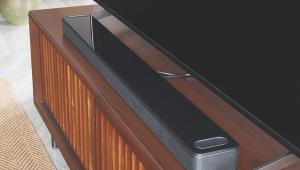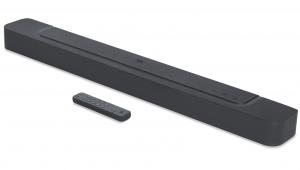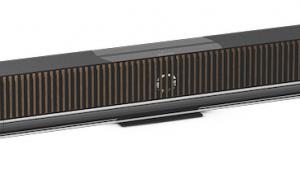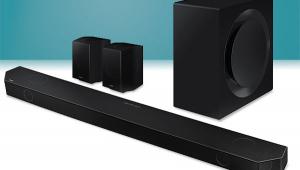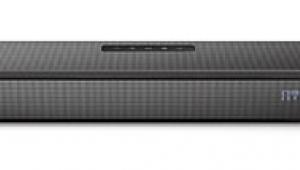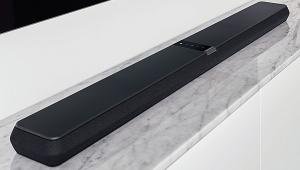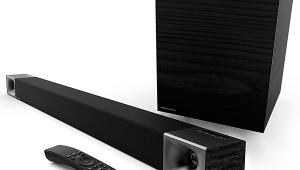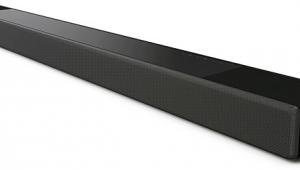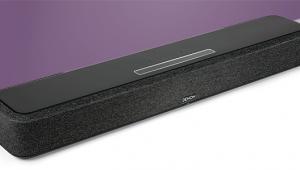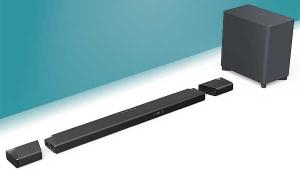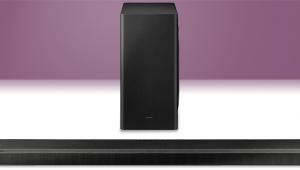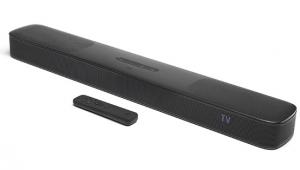Samsung HW-Q950A Soundbar Review
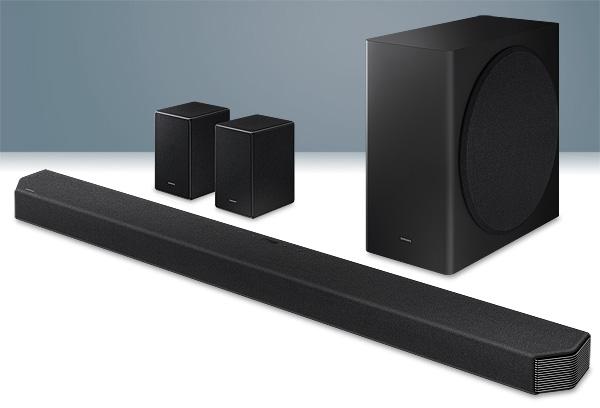
 The world's first 16-channel soundbar system leaves John Archer ducking for cover
The world's first 16-channel soundbar system leaves John Archer ducking for cover
More and more soundbars these days – high-end ones, anyway – stretch the soundbar definition to breaking point by comprising much more than just a single speaker unit that sits under your telly. In fact, Samsung's new HW-Q950A is arguably the most extreme example yet of a product blurring the boundaries between a soundbar and the once-popular 'home cinema in a box' concept.
It ships with four components: the main 1.23m-wide, 6.95cm-high, felt-covered soundbar; an unusually large wireless subwoofer with an 8in driver; and two small but solid-feeling wireless rears. And just to further mark it out as the next step in soundbar evolution is its provision of 16 – sixteen! – channels.
The main soundbar crams in nine: front left, right and centre; side right and side left; forward side right and left; and two upfiring drivers that bounce sound off your ceiling to deliver overhead/height effects. The rears then shoehorn in three drivers each: one traditional front-firer, one upfirer and a side-firing unit designed to deliver rear surround effects – these latter drivers are the main new additions to the specification of last year's Samsung's Q950T.
The subwoofer rounds out the Q950A's unprecedented 11.1.4-channel count, and if that weren't enough already, you can use Samsung's Q-Symphony tech to combine the soundbar with the speakers of compatible Samsung TVs.
Naturally, the Q950A carries both Dolby Atmos and DTS:X decoding. It also provides options for upscaling vanilla mixes, taking advantage of all its speakers.
To hook up sources, the 'bar has two HDMI inputs and eARC on its HDMI output, plus an optical digital audio input and the Bluetooth and Wi-Fi options found on pretty much all modern soundbars. The Q950A's HDMIs pass through 4K video (up to 60Hz) in the HDR, HDR10+ and Dolby Vision formats.
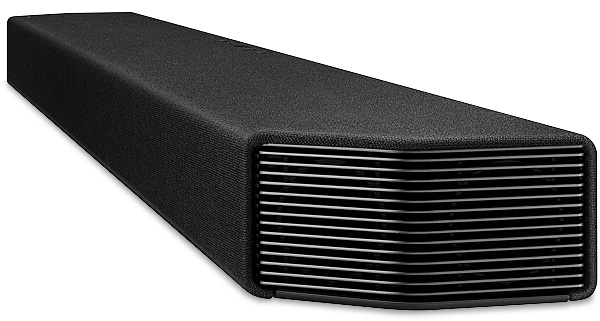
Another connection trick is Samsung's 'tap view'. This lets you establish a link with a fairly recent Samsung smartphone just by tapping it against the soundbar's chassis. While this is clever, it has led to a dumb design decision in the shape of an LED built into the 'bar's top edge. While you can see this on the odd occasion where you're stood up phone-in-hand, you can't see it at all when you're sat on your sofa watching a movie.
Getting to grips with the Q950A can take time, depending on how much you want to massage its performance. For instance, there's a seven-band EQ tool available (through the remote's Sound Control button and then specific key presses), plus channel level adjustment including front and rear height. Standard, Surround, Game Pro and Adaptive Sound presets offer a quicker tweak – note that the Standard mode is the go-to for native playback of stereo, multichannel and Atmos/DTS:X material (7.1.4).
Owners of 2021 Samsung TVs (Q70 models and above) can run an automatic room calibration routine that makes use of the display's processing silicon. Those without only get the Q950A's Auto EQ feature, which aims to correct the output of the subwoofer in relation to room acoustics.
Bringing Up The Rear
The contribution made by Samsung's new rear side channels is interesting. The first thing I noticed, unexpectedly, was how they helped make surround effects seem generally more prominent. The slightly subdued, reluctant nature of the rears provided with previous generations is gone.
That's not to say the side drivers are unduly powerful or overwhelming. It's just that the wider rear soundfield has more impact than I'd expected. It fills in gaps in the 3D soundstage that I hadn't even noticed were there with 2020's Q950T.
I'd worried that squeezing two more drivers into the compact bookshelf design of the Q950A's rears might have led to sonic compromises or, maybe, some cabinet rattles or buzzes. None of these fears were realised.
 |
Home Cinema Choice #351 is on sale now, featuring: Samsung S95D flagship OLED TV; Ascendo loudspeakers; Pioneer VSA-LX805 AV receiver; UST projector roundup; 2024’s summer movies; Conan 4K; and more
|


